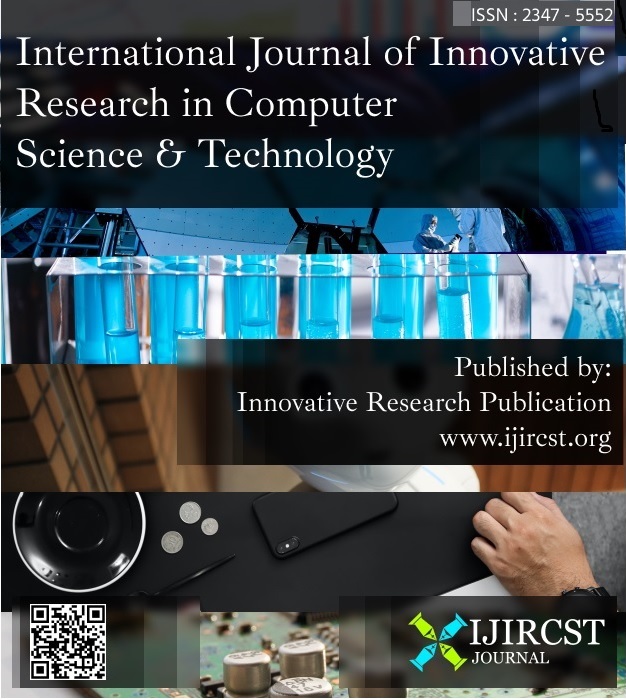Virtual Reality in Gaming
DOI:
https://doi.org/10.55524/Keywords:
Immersion, Multiplayer, Social Interaction, Virtual Reality, Video Gaming, Virtual Reality GamingAbstract
Augmented reality (VR) gaming is another sort of PC game which utilizes computer generated reality (VR) innovations that can give clients a totally practical, first-individual viewpoint of the game activity. Designing multiplayer virtual reality games is difficult because real-world influences can easily detract from immersion. In the 20th century, video games became the most important forms of entertainment. Its influence has multiplied and vastly enhanced in the twenty-first century. The gaming business was changed in such new market platforms with the introduction of mobile phones as well as portable devices. However, in order to establish virtual reality gaming as a credible new medium, it is necessary to provide enjoyable and social virtual reality experiences. This paper discuss design strategies for incorporating social interactions throughout game design while retaining immersion. The authors discuss the game design of such a collaborative regional multi-player/platforms virtual reality game as well as the effect of virtual reality on playing both from an enterprise as well as a player's perspective in this article to illustrate how our methodologies may be used and how successful they are. Virtual reality technologies are fast gaining popularity across a wide range of sectors. Virtual reality is changing the way things are done in a range of sectors, from health to automotive, because there are great expectations for the future, particularly in the case of video games.
Downloads
References
N. Janardan, “Impact of Virtual Reality on Gaming,” Int. Res. J. Eng. Technol., 2008.
S. A. Slater M., “A Virtual Presence Counter A Virtual Presence Counter A Virtual Presence Counter,” Presence Teleoperators Virtual Environ., 200AD.
W. R. Sherman and A. B. Craig, Understanding Virtual Reality: Interface, Application, and Design. 2003. [4] K. Emmerich, S. Liszio, and M. Masuch, “Defining second screen gaming: Exploration of new design patterns,” 2014, doi: 10.1145/2663806.2663855.
“WHY WE PLAY: AFFECT AND THE FUN OF GAMES: Designing Emotions for Games, Entertainment Interfaces, and Interactive Products,” in Human-Computer Interaction, 2020.
P. Sweetser, D. Johnson, P. Wyeth, A. Anwar, Y. Meng, and A. Ozdowska, “GameFlow in different game genres and platforms,” Comput. Entertain., 2017, doi: 10.1145/3034780.
P. Cairns, A. L. Cox, M. Day, H. Martin, and T. Perryman, “Who but not where: The effect of social play on immersion in digital games,” Int. J. Hum. Comput. Stud., 2013, doi: 10.1016/j.ijhcs.2013.08.015.
T. Fullerton, Game Design Workshop: A Playcentric Approach to Creating Innovative Games. 2008.
A. Rohr et al., “Rules of Play - Game Design Fundamentals Katie Salen and Eric Zimmerman The,” Abdom. Radiol., 2018.
M. Montola, “Exploring the edge of the magic circle: Defining pervasive games,” Proc. DAC, 2005.
A. Sharma, M. S. Ikbal, D. T. Cuong, and M. Zoppi, “A sliding mode-based approach to motion cueing for virtual reality gaming using motion simulators,” Virtual Real., 2021, doi: 10.1007/s10055-020-00439-5.
A. V. Rajan et al., “Virtual Reality Gaming Addiction,” 2019, doi: 10.1109/CTIT.2018.8649547.
D. Espy, A. Reinthal, and V. Dal Bello-Haas, “A Clinical Decision-Making Framework for the Use of Video Gaming as a Therapeutic Modality,” Front. Neurol., 2021, doi: 10.3389/fneur.2021.610095.
R. Chouhan and G. K. Sharma, “Virtual Reality: in Gaming,” Int. J. Multidiscip. Consort., 2015.
S. Garg, D. V. Gupta, and R. K. Dwivedi, “Enhanced Active Monitoring Load Balancing algorithm for Virtual Machines in cloud computing,” 2017, doi: 10.1109/SYSMART.2016.7894546.
S. Garg, R. K. Dwivedi, and H. Chauhan, “Efficient utilization of virtual machines in cloud computing using Synchronized Throttled Load Balancing,” 2016, doi: 10.1109/NGCT.2015.7375086.
R. Jha and A. K. Saini, “A comparative analysis & enhancement of NTRU algorithm for network security and performance improvement,” 2011, doi: 10.1109/CSNT.2011.23.
P. Choudhary and R. K. Dwivedi, “A novel algorithm for traffic control using thread based virtual traffic light,” Int. J. Inf. Technol., 2021, doi: 10.1007/s41870-021-00808-6.
V. Bhatnagar, J. Ranjan, and R. Singh, “Analytical customer relationship management in insurance industry using data mining: A case study of Indian insurance company,” Int. J. Netw. Virtual Organ., 2011, doi: 10.1504/IJNVO.2011.043803.
